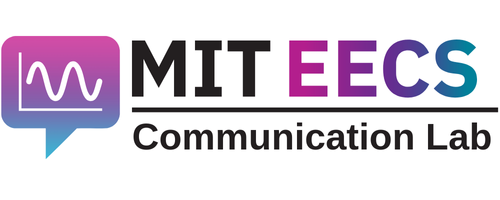Criteria for Success
To create a successful cover letter…
- Name the exact position / job.
- Show why you are interested in the position.
- Show how you think you and the organization are a good match.
- Make it clear you expect to hear back.
Structure diagram

Identify Your Purpose
Ideally, a cover letter is the cherry on top of a long process of networking and research about the job opportunity. In the best case scenario:
- you know exactly who will read the letter,
- you are acquainted with that person (or you know someone who knows that person),
- you made sure they will pay special attention to your letter, and
- you know what they are excited to see in candidates.
Your cover letter and resume are the first parts of your job application that will be evaluated. Your cover letter may be the only part anyone reads. If the hiring manager (or selection committee or whatever) doesn’t like what they see in your cover letter, your application might go directly into the “no” pile. You need to quickly assure your reader that the rest of your application is worth looking at.
If you make it over this first hurdle, the cover letter can serve as an overview for your resume. The cover letter and resume are closely related in terms of their purpose and tone, so you might also want to read our guide to writing a resume.
Analyze Your Audience
Get a feeling for the personality of your target employer or organization. Read the job posting and the rest of the employer’s website carefully. A group that describes itself as “a young and dynamic startup” will be looking for a different applicant than “an established industry leader.” Customize the formality and content of your application to match the employer’s self-image. The more you know about your potential employer, the stronger your cover letter can be.
Skills
Write a different cover letter for every application
A cover letter should show a match between you and the position you are applying for. To be a fit for a position, you need to also be a fit for the organization. Do your homework! What goals and opportunities excite you about the organization? What makes it a good place for you to work and advance your career? Which of your skills and accomplishments match those requested in the job posting?
You’ll be a more exciting candidate if you demonstrate that you understand and are enthusiastic about the organization’s mission. Find specific words or phrases that the organization uses to describe its own values (e.g., “transforming the landscape of renewable energy,” “fast-moving and dynamic”). Echo (but do not repeat verbatim!) these phrases in your letter. Highlight experiences and interests of yours that correspond to these values.
Follow the established structure
Most readers have well-defined expectations for a cover letter. They are reading many cover letters at once and want to quickly decide if you go in the “yes” or “no” pile. A cover letter is not a place for creative structure or excessive flair.
Header. Give your name and contact information.
- Don’t make your name too big. This isn’t a Stephen King novel.
- Your telephone number and email are enough. Include your address if you are local and you think they are looking for local job candidates.
Paragraph 1. Name the position. Include job numbers or job posting locations.
- “I am writing to express interest in position X…”
- This paragraph is one or maybe two sentences.
Paragraph 2. Show why you are interested in this position.
- “I am interested in the position because…”
- Make it clear you know what this job will entail.
Paragraph 3. Show why you and this organization are good for each other.
- “I think I would be a great match for this position because…”
- Why do they need you and exactly you?
Final paragraph. Make it clear you expect to hear back.
- “I look forward to hearing your response.”
Make concrete claims
Back up any claims about your abilities or qualifications with concrete accomplishments. If possible, quantify your accomplishments. For example, to show that you have “independence and an innovative research spirit,” describe the scope and outcomes of research projects you’ve led or carried out on your own.
Start a conversation
Your cover letter is designed to get you an interview, and successful interviews usually turn into conversations. Start the conversation early. Be humble and curious. A claim like “I know I’m a perfect match because XYZ” can make you sound foolish: who are you to say that’s true? A claim like “I’m excited to explore this opportunity because XYZ” is more professional and more likely to make them want to start a conversation with you.
Make no mistakes
A single spelling or grammar error can be enough to make a recruiter think you’re sloppy. Don’t let a little mistake keep you from this job.
If you’ve found a specific person to whom to address your letter, be absolutely sure you’ve spelled their name correctly. A misspelled name comes across as annoying and unprofessional.
Content adapted by the MIT Electrical Engineering and Computer Science Communication Lab from an article originally created by the MIT Biological Engineering Communication Lab.
